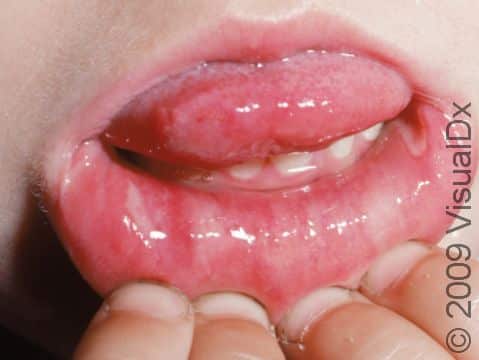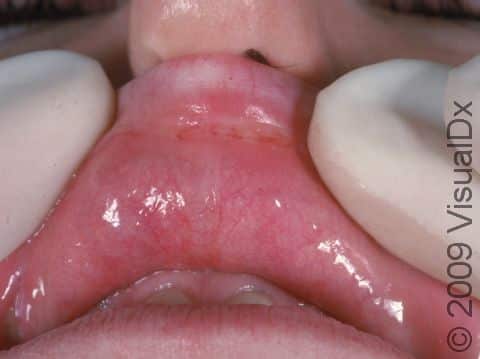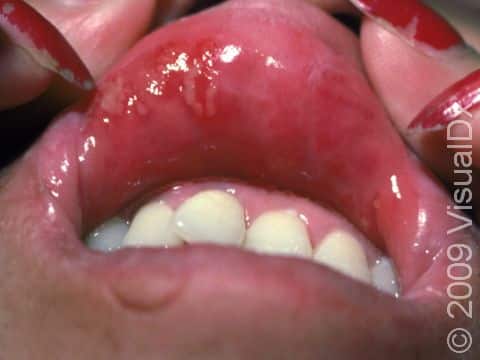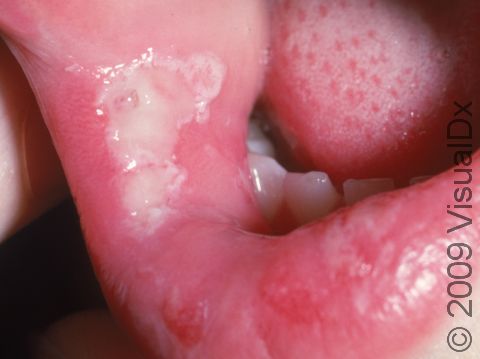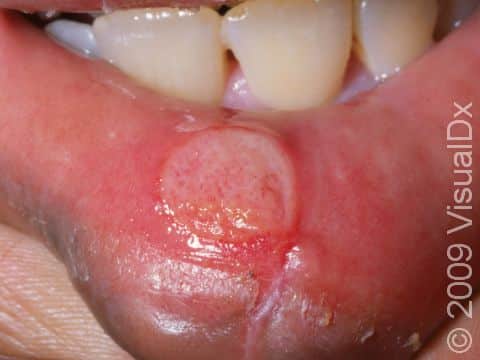Canker Sore (Aphthous Ulcer)
Aphthous ulcers, commonly known as canker sores and also known as aphthae, are the most common cause of recurring ulcers inside the mouth or on the genital area. Their cause is unknown, but stress, lack of sleep, trauma, and some vitamin deficiencies, toothpastes, and foods may make the condition worse. People with anemia and other medical conditions that weaken their immune system may be more likely to develop canker sores.
There are 3 types of canker sores:
- Minor aphthae (approximately 80% of cases) – mildly painful, shallow ulcers that last about 1-2 weeks and generally heal without scarring
- Major aphthae (Sutton disease, approximately 10% of cases) – extremely painful, deep ulcers that last from 2-4 weeks and generally cause scars after they heal
- Herpetiform aphthae (approximately 10% of cases) – usually multiple ulcers, but they last about 1-4 weeks and generally heal without scarring
Who's At Risk?
Canker sores are more common in women, and they usually start to appear in children or teens. Most people who get a canker sore have recurrences.
People with certain underlying diseases, such as HIV / AIDS and inflammatory bowel disease, are often severely affected with canker sores.
Signs & Symptoms
The most common locations of canker sores are inside the lips or on the tongue. The genitals may also be affected. The ulcers can have a round or oval shape and have a white, gray, or yellow base surrounded by a red ring.
- Minor aphthae are single or multiple lesions, 1.0 cm or less in diameter.
- Major aphthae are deep ulcers greater than 2.0 cm in diameter.
- Herpetiform aphthae appear as multiple ulcerations.
Self-Care Guidelines
No self-care is necessary except for gentle oral care. There is no cure for canker sores, but the following measures may help relieve the pain associated with them:
- Apply protective pastes to form a barrier over the sore, such as Orabase.
- Apply local anesthetics (benzocaine, lidocaine) to help numb the area.
- Avoid acidic foods and beverages when you have a canker sore, as they can increase ulcer pain.
To help your child prevent canker sores, have them:
- Maintain a good diet or take vitamin supplements.
- Get enough sleep.
Treatments
Most people are treated with topical steroids or other medications applied to the affected area to speed up healing of the lesions. These include:
- Mouth rinses such as chlorhexidine or sucralfate.
- Topical steroid paste or ointment such as triamcinolone or clobetasol.
- Tetracycline dissolved in water to swish around the mouth (in children 9 years or older).
Visit Urgency
See your child’s medical professional for evaluation if their canker sores do not heal, occur frequently, or are extremely uncomfortable or painful.
References
Bolognia J, Schaffer JV, Cerroni L. Dermatology. 4th ed. Philadelphia, PA: Elsevier; 2018.
James WD, Elston D, Treat JR, Rosenbach MA. Andrew’s Diseases of the Skin. 13th ed. Philadelphia, PA: Elsevier; 2019.
Kang S, Amagai M, Bruckner AL, et al. Fitzpatrick’s Dermatology. 9th ed. New York, NY: McGraw-Hill Education; 2019.
Paller A, Mancini A. Paller and Mancini: Hurwitz Clinical Pediatric Dermatology. 6th ed. St. Louis, MO: Elsevier; 2022.
Last modified on June 18th, 2024 at 2:23 pm

Not sure what to look for?
Try our new Rash and Skin Condition Finder
